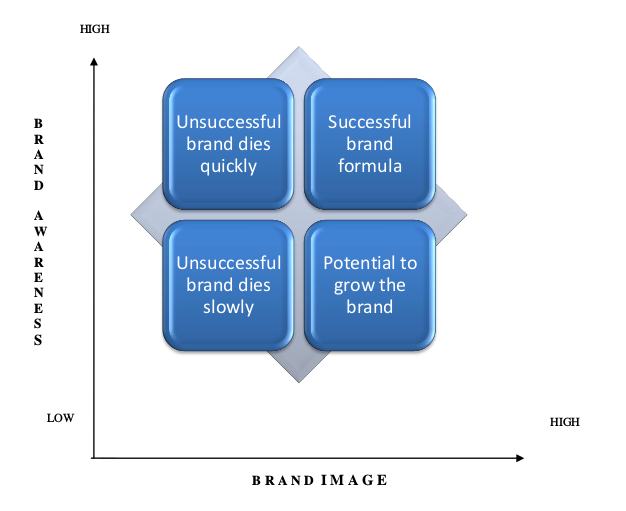In this third post of the “Marketing an Open Source Project” series. I explore the key concepts related to marketing and branding. The goal is to provide insights into the evolving role of marketing, the significance of branding, and the importance of brand awareness and image in shaping consumer decisions and company performance, with the aim of connecting these concepts later on to open-source communities. If you haven’t read the first article, you can find it here.
Marketing
Marketing is no longer about mere product sales; it’s about understanding customer needs so well, to create products that practically sell themselves [1]. The purpose of marketing is to attract and retain customers, relevant even for non-profit organizations.
“Today, marketing must be understood not in the old sense of making a sale – ’telling and selling’ – but in the new sense of satisfying customer needs.”
Kotler & Armstrong, 2011, p. 5 [2]
Branding
It can be argued that among all the different concepts of marketing, branding plays a key role in developing a successful product. Therefore, in many companies, branding is the major goal of their marketing [3]. Additionally, according to SEMPO, one of the largest non-profit trade organisations in the world, a brand is what identifies business to consumers: it resides in the hearts and minds of customers and prospects as the total of their experiences with and perceptions of a company.
Therefore, branding is crucial for successful products. It’s how consumers perceive a company based on their experiences. A brand represents a product, service, organization, or idea, with visual symbols like logos. Creating a deep set of positive associations in consumers’ minds is key, as attributes can be copied, and consumers prioritize benefits over attributes [4].
Brand Awareness
The first dimension of brand knowledge is brand awareness. It relates to how easily consumers recognize and recall a brand, affecting decision-making, even in low-involvement situations. [5]
Hence, brand awareness becomes essential, because it plays an important role in the consumers’ decision-making process. On one hand, it is important that consumers think of the brand when they think about the product category. On the other hand, in low-involvement decision settings, a minimum level of brand awareness may be sufficient for product choice, even in the absence of a well-formed attitude [6].
Brand Image
Brand image is the set of beliefs consumers hold about a brand [7], originating from their perception [8]. It can be influenced by direct experience, word of mouth, and associations with other entities [5]. A strong brand image helps fulfill consumer needs, differentiate from competitors, and boosts market share and performance. [9]
Although there are many definitions of brand image, they all agree that the brand image exists in the consumers’ minds. Therefore, brand image is hard to be governed by the company, because it originates from consumers and their perception of a certain brand. [10]
This figure presents the relationship between brand awareness and brand image. High brand awareness expresses that the brand is known and enjoys a high profile, while low brand awareness implies that consumers do not know about the brand. Additionally, a high or low brand image means that the brand possesses a good or weak reputation respectively.

In conclusion, effective branding requires strong brand awareness and image. These aspects are crucial not only for traditional companies but also for non-profit organizations, such as open-source communities. In an open-source software (OSS) project, communities are not engaged in marketing for sales purposes, instead, they are focused on building awareness for an exceptional piece of software. Additionally, considering that less than 45% of professional developers contribute to open-source projects, it can be argued that any OSS project can benefit from robust marketing efforts to attract more contributors.
Next week, I will delve into the literature concerning open-source, explore its business ecosystems, and delve deeper into existing marketing projects related to open source.
References:
[1] Drucker, Peter F (1974). Drucker Management. Allied Pub (p) Limited. ISBN : 9788184241488.
[Online]. Available at: https://books.google.de/books?id=Y{_}Q6Pe{_}dWq0C.
[2] Kotler, P. T. & Armstrong, G., 2011. Principles of Marketing. s.l.:Pearson Education
[3] Bruemmer, P. J., 2005. Branding With Search Marketing. s.l.:s.n.
[4] Kotler, P., 2000. Marketing Management: The Millennium Edition. s.l.:s.n.
[5] Keller, K. L., 1993. Conceptualizing, Measuring, and Managing Customer-Based Brand Equity. Journal
of Marketing, January, Volume 57, p. 1.
[6] Bettmann, J. R. & Park, C. W., 1980. Effects of Prior Knowledge and Experience and Phase of the
Choice Process on Consumer Decision Processes: A Protocol Analysis. Journal of Consumer Research,
Volume 7, p. 234–248.
[7] Kotler, P., Armstrong, G. & Armstrong, G. M., 1999. Principles of Marketing. s.l.:Prentice Hall.
[8] American Marketing Association (AMA), 1995. Dictionary. s.l.:s.n.
[9] Hsieh, M.-H., Pan, S.-L. & Setiono, R., 2004. Product-, Corporate-, and Country-Image Dimensions
and Purchase Behavior: A Multicountry Analysis. Journal of the Academy of Marketing Science,
Volume 32, p. 251–270.
[10] Keller, K. L., 1998. Measuring Customer-Based Brand Equity. Perspectives of Modern Brand
Management, Volume ed. Dr Fra, p. 989–1010.
[11] Bowie, D and F Buttle (2004). Hospitality Marketing: An Introduction. Elsevier. ISBN : 9780750652452.
[Online]. Available at: https://books.google.de/books?id=fm1g5CL1{_}FkC.

I am a systems engineer with a great passion for open source, software development, and technology in general. I have been part of the iDempiere community since 2012. I believe the enterprise world is one of the most aggressive environments out there. Companies tend to ruthlessly compete against each other. That is why seeing competitors co-exist and cooperate in harmony in iDempiere (and OSS communities in general) is so interesting to me.
